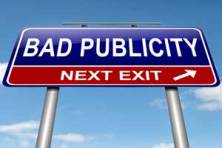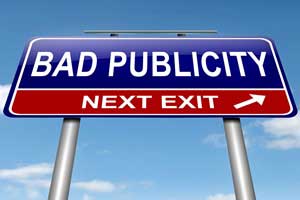By: Sarah Copeland
Throughout this past semester, many of my classes have brought in guest speakers that talked about reputation management. After about the third speaker, I got the message: reputation is incredibly important. But whose reputation? Well, the reputation of just about anything and everything.
If a company does not have a good reputation then its business will be damaged. Anything from the quality of a product to the quality of a service is judged by the public. No matter where you work, your company or your brand needs reputation management.
A successful company is a familiar and popular company with loyal customers. Have you ever heard of top-of-mind awareness? Top-of-mind awareness is like asking what smartphone is the best and having someone respond with iPhone. It may not be true but it’s what most people would say because everyone knows about Apple products and its reputation.

So how do you control a company, a product or a brand’s reputation? Recently, my PR courses have been working on communication plans to enhance the success of certain clients. The main issue with both these clients has been awareness. Not enough people care about what our clients do and that is a problem. Our challenge? Raise the brand familiarity and positive reputation among customers through PR methods.
The public relations aspect of reputation is important during the campaign. Key messages are created and an end goal is established all in the effort to reach internal and external audiences. The goal? Enhancing the awareness and understanding of a brand to increase its credibility and top-of-mind awareness.
There are two main broad-reach platforms that can be used in PR campaigns to help build and maintain reputation. They are media and social media. Social media is now customer service central. Why call a customer service line when social media is available to post all your disgruntled feelings about a product? Ever notice how fast companies respond when you post something negative about their services? It’s uber-fast or at least it should be.
Social media is a hotspot for companies to build their reputation. They can increase engagement with their customers and also manage disappointed customers at the same time. All they have to do is post a helpful comment to a disgruntled customer to help fix the problem. If they do it well then they have one more loyal customer to spread positive WOM about that company.
Next time a product lets you down, go to social media and complain and see how long it takes the company to reply to try and fix the problem. It’s all about reputation management in order to maintain loyal customers and a positive top-of-mind awareness.
References:
Leibowitz, C. (2014, June 02). Branding & Public Relations Go Hand-in-Hand – Branding & PR. Retrieved April 29, 2016, from http://www.5wpr.com/new/branding-and-public-relations/
Mikacova, L., & Gavlakova, P. (2014, January 24). The Role of Public Relations in Branding. Retrieved April 29, 2016, from http://www.sciencedirect.com/science/article/pii/S1877042813055687
Pearce, C. (2011, May 11). Why PR is good for branding. Retrieved April 29, 2016, from http://craigpearce.info/pr-good-branding/
Walkden, L. (2013, June 19). Brand Reputation Management: Your Seven-Point Game Plan. Retrieved April 29, 2016, from http://www.marketingprofs.com/articles/2013/11004/brand-reputation-management-your-seven-point-game-plan


